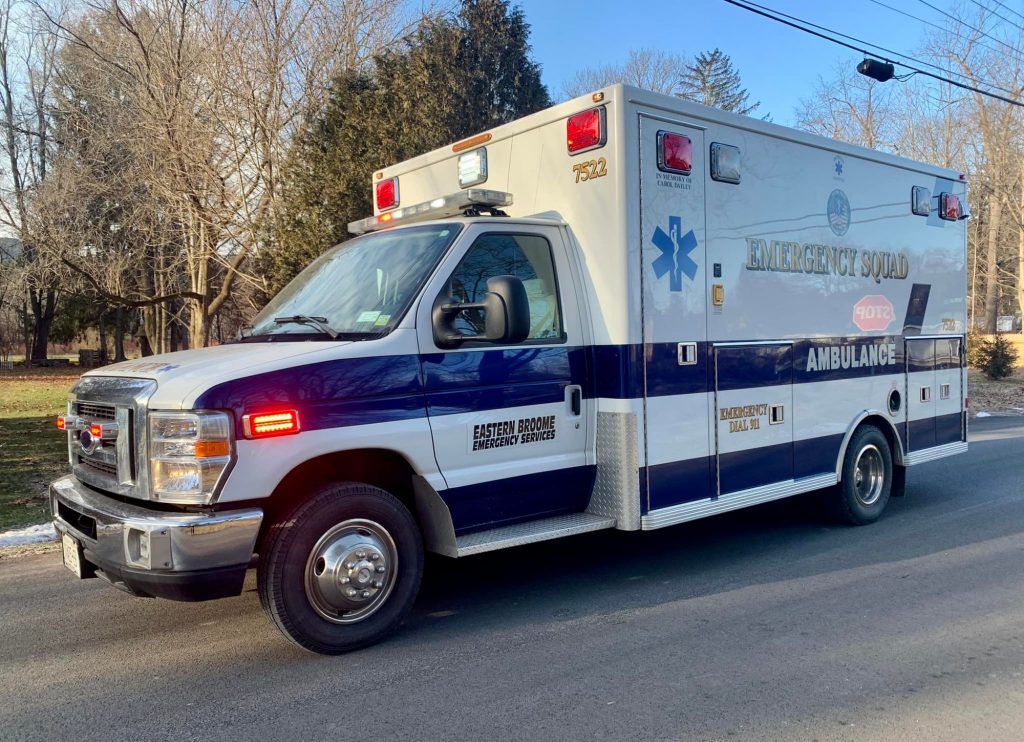New York Gov. Kathy Hochul signed a series of laws aimed to help stabilize emergency medical services finances and expand on-site treatment options.
The legislative package, comprised of two main bills, was created to solve some of the major problems facing EMS providers. The first will require Medicaid reimbursement of EMT services if a patient was treated on-site or sent to a facility other than a hospital. The second will allow EMT services to conduct emergency blood transfusions on-site, a process previously reserved for air ambulance services, instead of waiting until the patient arrives in a hospital.
Before these laws were passed, EMS providers were only reimbursed for hospital transfers, not patient transfers to another institution, like an urgent care or substance abuse facility.
Donna Lupardo, the state assemblywoman who represents the city of Binghamton and southwestern Broome County, noted that EMS organizations are currently “struggling to purchase updated equipment, recruit and train responders, or even remain in service.”
The variety of EMS providers — state-funded, private, for-profit and not-for-profit — make it difficult for legislators to craft bills addressing providers’ financial struggles. Expanding Medicaid reimbursement for EMS providers was part of a “Rescue EMS” campaign organized by Lupardo and others in late January.
Benjamin Boykin II, the president of the New York State Association of Counties, said rising costs and “high demand for increasingly complex services” have strained EMS providers across the state. The hope is that greater Medicaid reimbursement for EMS providers will prevent them from shutting down or reducing health care access. The reimbursement bill was introduced earlier this year by Assemblywoman Anna Kelles and State Sen. Michelle Hinchey, and its passage represents a victory for EMS providers.
“Emergency Medical Services provide essential lifesaving care throughout the state, including direct aid both on site and in transit to a medical facility,” Kelles, who represents Cortland and Ithaca, said in a press release. “These services are especially critical in rural areas where access to hospitals may be hours away. I am grateful to Governor Hochul for signing this bill today and taking a large step towards reimbursing these brave, dedicated healthcare providers. Providing them with discretion to determine the emergency location that will best serve their patient’s needs not only is common sense, but it also provides a more efficient delivery of emergency services.”
Another bill introduced by Lupardo — removing EMS services from the real property tax cap — was included in the original package and would allow local municipalities to better support emergency services. Other introduced proposals would expand the personal income tax credit for eligible volunteer firefighters and ambulance workers. Another would allow them to claim both state income and local property tax credits.
Steven Kroll, chair of the nonprofit New York State Volunteer Ambulance and Rescue Association Legislative Committee, said the passed legislation will help EMS services better respond to community needs.
“EMTs and Paramedics are the first health professionals that people see when they are ill and injured and these new laws give EMS clinicians more tools to care for their communities,” Kroll said in a press release. “The Treat-In-Place law will allow efficient and effective use of health care resources through provider payment when EMS services provide patient-centered care without ambulance transportation to the hospital. The ground ambulance blood transfusion law will quickly bring lifesaving transfusions to patients with serious injuries. Both new laws demonstrate New York’s commitment to being a leader in emergency medical service innovation and quality.”



